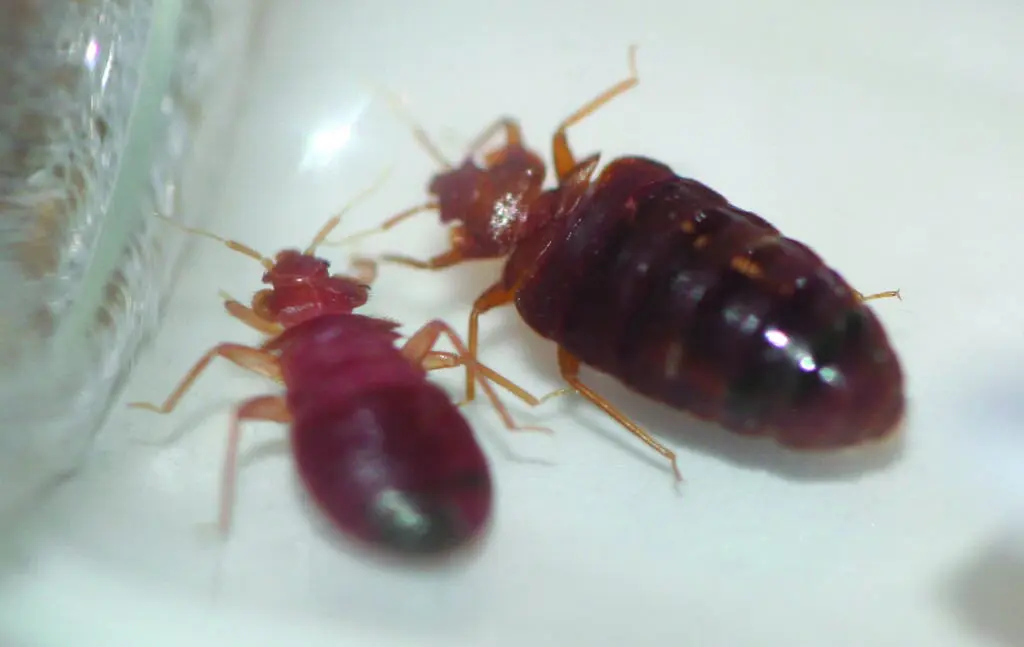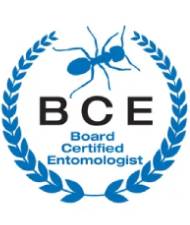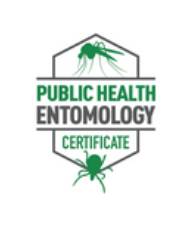Bed Bug Awareness:Preventing, and Managing Bed Bugs

Bed Bug Awareness Week 2025: Understanding, Preventing, and Managing Bed Bugs
June 1-7, 2025, marks Bed Bug Awareness Week, a critical time to educate the public about one of the most persistent household pests: bed bugs. This annual observance, spearheaded by the National Pest Management Association (NPMA) and its consumer outreach arm, the Professional Pest Management Alliance (PPMA), aims to raise awareness about bed bug prevention, detection, and control. As summer travel peaks, the risk of bed bug infestations rises, making Bed Bug Awareness more important than ever. In this blog, we’ll explore the history of Bed Bug Awareness Week, delve into the biology and significance of bed bugs, explain how they invade homes, highlight prevention strategies, and emphasize the vital role of professional pest management.
History of Bed Bug Awareness Week
Bed Bug Awareness Week was officially established in 2017 by the NPMA to address the growing public health concern of bed bug infestations across the United States. The initiative was launched in response to a dramatic resurgence of bed bugs since the late 1990s, driven by increased global travel, insecticide resistance, and the trade of second-hand goods. The NPMA chose the first week of June—June 1-7, 2025—for this year, as it coincides with the start of the summer travel season, a time when bed bugs are frequently spread through luggage, clothing, and furniture.
The PPMA has since led the charge, using social media campaigns, educational resources, and partnerships with pest control professionals to promote Bed Bug Awareness. In 2018, the NPMA declared June 3-9 as Bed Bug Awareness Week, and by 2024, the observance was recognized in Chase’s Calendar of Events, cementing its national significance. The initiative has grown, with millions of online conversations-six million in April 2020 alone—highlighting the public’s concern about bed bugs. The week emphasizes education, prevention, and the importance of professional pest management to combat this resilient pest.
What Are Bed Bugs? Identity, Physiology, Biology, and Morphology
Identity
Bed bugs are parasitic insects of the genus Cimex, primarily Cimex lectularius (common bed bug) and Cimex hemipterus (tropical bed bug). These micropredators feed on the blood of humans and other warm-blooded hosts, such as pets or birds, typically at night. Unlike mosquitoes or ticks, bed bugs are not known to transmit diseases, but their bites can cause significant discomfort, allergic reactions, and psychological distress.
Physiology and Biology
Bed bugs are hematophagous (blood-feeding) insects belonging to the order Hemiptera. They undergo hemimetabolous development, progressing through five nymphal stages before reaching adulthood. Each stage requires a blood meal to molt or reproduce. A single female can lay 1-5 eggs per day, totaling up to 500 eggs in her lifetime, making infestations difficult to control. Bed bugs can survive for up to 300 days without feeding, thriving in environments with temperatures between 70°F and 80°F. They are highly resilient, capable of withstanding freezing temperatures and living in hidden crevices.
Morphology
Adult bed bugs are small, measuring 4-7 mm in length (about the size of an apple seed). They have an ovate, dorsoventrally flattened body, which appears squashed from top to bottom, allowing them to hide in narrow cracks. Unfed bed bugs are brown, while those that have recently fed appear reddish-brown due to ingested blood. They lack functional wings, relying on crawling to move. Their mouthparts consist of a labium and stylets that form salivary and food canals for piercing skin and sucking blood. Bed bug eggs are 1 mm long, white, and pear-shaped, often found in clusters.
Why This Matters
Understanding bed bug biology and morphology is crucial for promoting bed bug awareness, as it informs detection and control strategies. Their small size, nocturnal habits, and ability to hide in tiny crevices make them hard to spot. Their rapid reproduction and resistance to many pesticides complicate the eradication process. Bites can cause itchy welts, secondary infections, or anxiety, all of which can impact quality of life. By knowing their habits, such as their preference for aggregating in mattresses or furniture, homeowners and professionals can target infestations more effectively.
How Bed Bugs Enter Homes
Bed bugs are expert hitchhikers, entering homes through various pathways, especially during travel or when acquiring used items. Here are the primary ways bed bugs invade:
- Travel: Bed bugs are frequently transported in luggage, clothing, or personal items from infested locations, such as hotels, motels, or public transportation. Summer travel, which peaks in June, significantly increases this risk.
- Second-Hand Goods: Purchasing used furniture, mattresses, or clothing can introduce bed bugs if the items are infested with them. Thrift stores and yard sales are familiar sources.
- Visitors or Shared Spaces: Guests, maintenance workers, or residents in multi-unit buildings can unknowingly carry bed bugs. In apartments, bed bugs can crawl through walls or shared spaces to neighboring units.
- Public Venues: Movie theaters, retail stores, offices, or libraries can harbor bed bugs, which may latch onto bags or clothing and be brought home.
Their thigmotactic nature (preference for tight spaces) makes them adept at hiding in cracks, seams, or folds, facilitating their spread. Increased global travel, nomadic lifestyles, and insecticide resistance have fueled their resurgence since the 1990s.
Preventing Bed Bugs in Homes
Preventing bed bugs requires vigilance and proactive measures, especially during Bed Bug Awareness Week 2025. Here are effective strategies to keep bed bugs out:
- Inspect When Traveling:
- Use a flashlight to inspect hotel rooms, focusing on the seams of mattresses, box springs, headboards, and furniture. Avoid placing luggage on beds or upholstered surfaces.
- Upon returning home, thoroughly vacuum your luggage and wash all clothing in hot water (at least 131°F) or dry on high heat for 15-30 minutes.
- Use a flashlight to inspect hotel rooms, focusing on the seams of mattresses, box springs, headboards, and furniture. Avoid placing luggage on beds or upholstered surfaces.
- Be Cautious with Second-Hand Items:
- Inspect used furniture or clothing carefully before bringing them home. Consider heat-treating or professionally cleaning items.
- Avoid picking up discarded furniture from curbs, as it may be infested. If discarding infested items, mark them clearly to prevent others from taking them.
- Inspect used furniture or clothing carefully before bringing them home. Consider heat-treating or professionally cleaning items.
- Reduce Clutter:
- Minimize clutter in your home to eliminate hiding spots. Store items in sealed plastic containers rather than cardboard boxes.
- Use mattress and box spring encasements to trap and starve bed bugs, preventing access to hiding spots.
- Minimize clutter in your home to eliminate hiding spots. Store items in sealed plastic containers rather than cardboard boxes.
- Routine Inspections:
- Regularly check beds, furniture, and baseboards for signs of bed bugs, such as live bugs, fecal stains, or shed skins. Early detection is key.
- Consider using interceptor cups under bed legs to trap crawling bed bugs, which can increase detection rates to 99% when paired with visual inspections.
- Regularly check beds, furniture, and baseboards for signs of bed bugs, such as live bugs, fecal stains, or shed skins. Early detection is key.
- Maintain Cleanliness:
- Vacuum frequently, especially in bedrooms, and dispose of vacuum contents promptly in sealed bags. Leaving vacuum bags in the freezer for several days can kill any trapped bugs.
- Wash bedding regularly in hot water and dry on high heat to kill any potential bed bugs or eggs.
- Vacuum frequently, especially in bedrooms, and dispose of vacuum contents promptly in sealed bags. Leaving vacuum bags in the freezer for several days can kill any trapped bugs.
The Importance of Professional Pest Management
Controlling bed bugs is notoriously challenging due to their cryptic behavior, rapid reproduction, and resistance to many pesticides, including pyrethroids. Professional pest management is often essential for effective eradication, and Bed Bug Awareness Week highlights the critical role it plays. Here’s why professionals are vital:
- Accurate Identification:
- Bed bugs are often mistaken for fleas, carpet beetles, or bat bugs. Professionals utilize expertise and tools, such as bed bug-sniffing dogs, to confirm infestations, thereby reducing the likelihood of false positives.
- If you suspect an infestation, hiring a professional pest management inspector is crucial to verify the presence of bed bugs and assess the extent of the problem.
- Bed bugs are often mistaken for fleas, carpet beetles, or bat bugs. Professionals utilize expertise and tools, such as bed bug-sniffing dogs, to confirm infestations, thereby reducing the likelihood of false positives.
- Comprehensive Treatment Plans:
- Professionals employ Integrated Pest Management (IPM), which combines non-chemical methods (such as heat treatments, vacuuming, and encasements) with targeted pesticides. IPM minimizes environmental impact and addresses pesticide resistance.
- Heat treatments, which raise room temperatures to 122-130°F for several hours, are highly effective but require specialized equipment that only professionals can provide.
Fumigation using Vikane gas is 100% effective against all stages of bed bugs, including eggs.
- Professionals employ Integrated Pest Management (IPM), which combines non-chemical methods (such as heat treatments, vacuuming, and encasements) with targeted pesticides. IPM minimizes environmental impact and addresses pesticide resistance.
- Thoroughness and Follow-Up:
- Bed bugs hide in hard-to-reach areas, and incomplete treatments can lead to re-infestations. Professionals conduct thorough inspections and multiple treatment cycles to ensure eradication.
- Ongoing surveillance, using active monitors such as CO2 traps, helps confirm that the infestation has been eliminated.
- Bed bugs hide in hard-to-reach areas, and incomplete treatments can lead to re-infestations. Professionals conduct thorough inspections and multiple treatment cycles to ensure eradication.
- Education and Prevention:
- Pest control experts educate homeowners on prevention measures, such as inspecting second-hand items and preparing rooms for treatment (e.g., reducing clutter and sealing cracks).
- In multi-unit buildings, professionals work closely with landlords to prevent cross-unit spread, a common issue in apartment complexes.
- Pest control experts educate homeowners on prevention measures, such as inspecting second-hand items and preparing rooms for treatment (e.g., reducing clutter and sealing cracks).
- Cost-Effectiveness:
- DIY methods, such as bug bombs or over-the-counter pesticides, are often ineffective and can worsen infestations by dispersing bed bugs. Professionals save time and money by addressing the problem efficiently.
- DIY methods, such as bug bombs or over-the-counter pesticides, are often ineffective and can worsen infestations by dispersing bed bugs. Professionals save time and money by addressing the problem efficiently.
The NPMA’s 2018 survey found that 97% of pest professionals treated bed bugs in the past year, with 68% noting bed bugs as the most challenging pest to control. If you suspect a bed bug infestation, contact a licensed pest management professional immediately to prevent the infestation from escalating.
Conclusion
Bed Bug Awareness Week 2025 (June 1-7) is a vital opportunity to educate the public about bed bugs. This resilient pest has resurged globally due to travel, insecticide resistance, and the trade of second-hand goods. Established in 2017 by the NPMA, this week promotes Bed Bug Awareness through education and prevention, especially during the high-risk summer travel season.
Bed bugs, small blood-feeding insects of the genus Cimex, are challenging to control due to their cryptic nature, rapid reproduction, and resistance to pesticides. Understanding their biology—characterized by small, flattened bodies, nocturnal feeding habits, and the ability to survive for months without a meal—is key to effective management. Bed bugs enter homes through luggage, used furniture, or shared spaces.
However, proactive measures such as inspecting hotel rooms, washing clothes in hot water, and reducing clutter can help prevent infestations. Professional pest management is crucial for accurate identification, comprehensive integrated pest management (IPM) treatments, and long-term prevention, particularly given the limitations of DIY methods.
By staying vigilant and informed during Bed Bug Awareness Week, we can safeguard our homes and communities against the physical, emotional, and financial impacts of bed bug infestations.
Call to Action: If you suspect bed bugs, don’t delay—hire a professional pest management inspector to confirm and address the issue. Share this blog to spread Bed Bug Awareness and help others stay pest-free!

Jeffery Preece, BCE, PHE
Jeff is the owner and technical director of ZipZap Termite & Pest Control.



